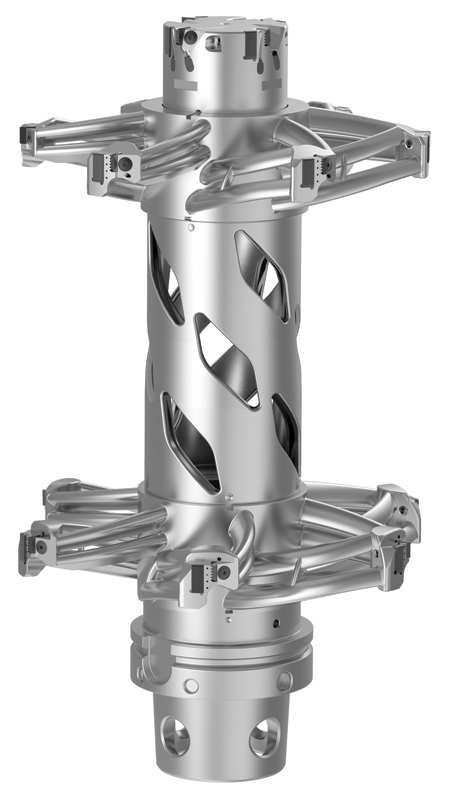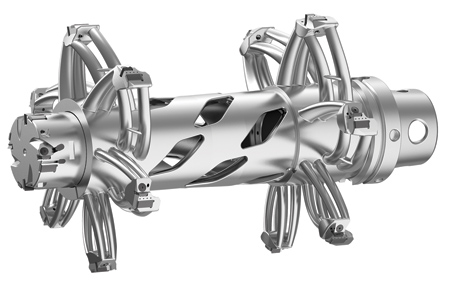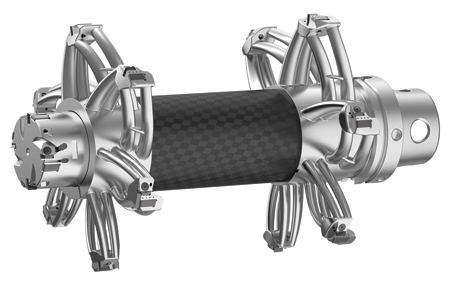
Kennametal technologies used in creating the stator bore tool included high precision RIQ reaming inserts and KM4X adaptor for rigidity.

The 3D printed stator bore tool with a carbon-fiber tube weighs 10.7 kg.

Instead of using a 3D printed metal tube, a tool version with a carbon fiber tube was used in this example, reducing the weight to 9.5 kg.
Kennametal has developed a 3D printed stator bore tool specifically designed to meet growing customer demand for lighter weight tooling solutions used to machine components for hybrid and electric vehicles.
"E-mobility components are typically machined on smaller, low horsepower CNC machining centers that require lighter weight tooling solutions. Kennametal's 3D printed stator bore tool weighs half that of the conventionally manufactured version, while still meeting accuracy, roundness and surface finish requirements for aluminum motor body boring," said a company spokesperson.
"The main bore that houses the stator of an electric motor measures approximately 250 mm in diameter (9.84 in.) and approximately 400 mm (15.74 in.) in length, with a smaller bearing bore at the bottom," said Harald Bruetting, Manager, Program Engineering. "When manufactured using conventional means, a reamer for this type of application would weigh more than 55 lbs., far too heavy for the existing machine tool or for an operator working with the tool."
Bruetting and Kennametal's Solution Engineering Group turned to the company's in-house additive manufacturing (AM) capabilities to 3D print a strong but lightweight indexable tool, equipped with Kennametal technologies, including fine adjustable RIQ reaming inserts for high precision finishing and a KM4X adaptor for maximum rigidity. The tool also features internal 3D printed cooling channels that help maximize productivity and tool life.
"By using metal powder bed 3D printing together with finite element analysis software, we were able to design and build a tool that brought the moment of inertia very close to the spindle face, increasing its rigidity while meeting the customer's weight restrictions," said Werner Penkert, Manager, Future Solutions. "It is an excellent example of how Kennametal is using advanced manufacturing technology to help meet our customer's unique challenges."
Two versions of the tool were built, one with a carbon-fiber tube, the other using a 3D printed metal tube. The tool with the 3D printed tube weighed in at 23.6 lbs. and the carbon fiber version at 20.9 lbs., less than half of their conventional counterparts.
For more information contact:
Kennametal Inc.
600 Grant Street
Suite 5100
Pittsburgh, PA 15219
800-446-7738
www.kennametal.com